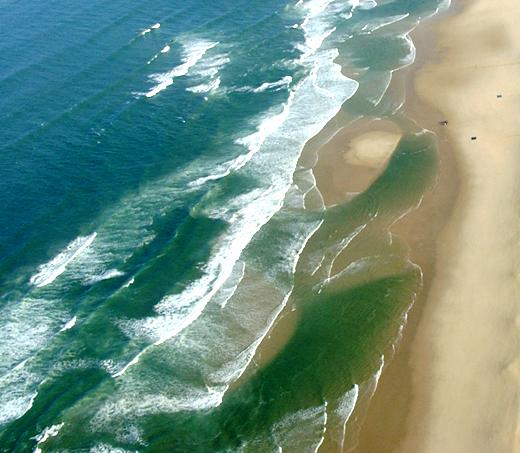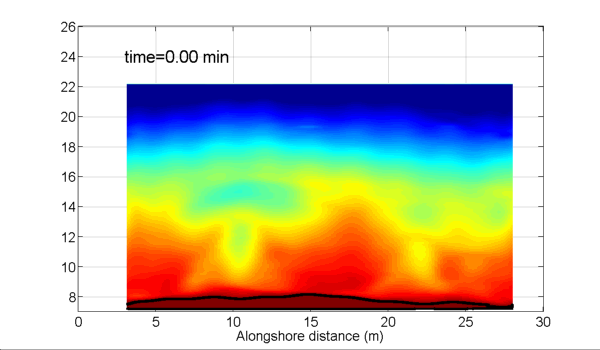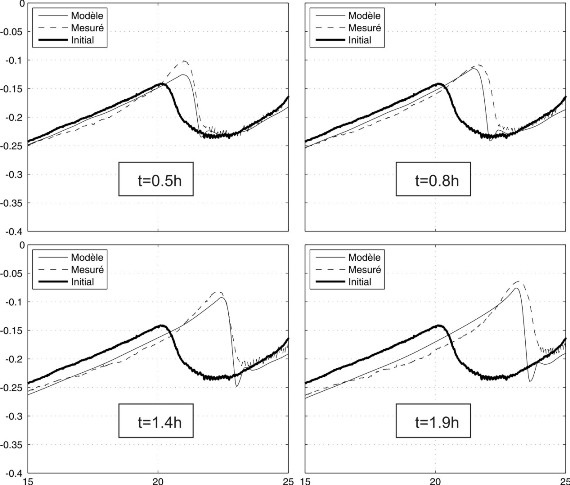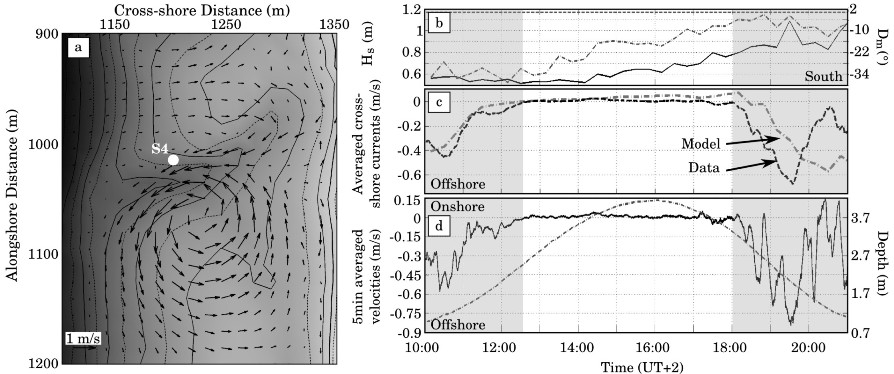Physical and numerical modelling of sandy beach morphodynamics


| MODLIT
Physical and numerical modelling of sandy beach morphodynamics |
  |
|
Understanding
and modelling the evolution of sandy coastlines is scientific challenge
(Stive and Reniers, 2003). Despite recent
significant advances, numerical models are, at this stage, not
able to simulate the overall evolution of nearshore sandbars. In
particular, significant issues remain in the modelling of cross-shore
sandbar migration and its implementation in 3D sandbar modelling. The
impact of tide and low-frequency waves on nearshore sandbar
dynamics, as well as the mechanisms controlling the reshaping of 3D
patterns into shore-parallel linear sandbars during up-state sequences
(storms) remain unclear. In addition, the interactions between the
sandbars in multiple-barred beaches and with the shoreline are still
poorly understood.
|
 Truc Vert beach, Aquitanian coast
|
|
Experiment in wave bassin (LHF, SOGREAH)
|
There are 4 main approaches to understand nearshore sandbar dynamics: remote sensing (sattelite, video, etc), in-situ measurements, numerical modelling and physical modelling. The MODLIT Project aims at developping numerical and physicl modelling. The main goal of this project is to improve the knowledge on how nearshore sandbars behave, in particular with the implementation of innovative physical experiments. Numerical modelling exercices are confronted with the physical models as well as with recent intensive field experiments (for instance the international ECORS Field Campaign - PEA ECORS). The objective is to achieve the development of a numerical model able to simulate both down-state and up-state sequences of nearshore sandbars and their cross-shore and alongshore migrations. |

A number of nurmerical models are used and developped in the framework of the MODLIT Project. We can descriminate two numerical modelling approaches: the 1DH models that simulate the evolution of beach profiles and the 2DH models that simulate the evolution of 3D surfzone sandbar patterns. 1DH models are developped to explore the processes responsible for cross-shore sandbar migration. 2DH models are used to investigate the mechanisms responsible for the formation and non-linear evolution of 3D sandbars and how they potentially interact. The scientific advances reached during the developement of the 1DH models will be, eventually, implemented in the 2DH models in order to explore the potential mechanisms responsible the reshaping of the 3D surfzone sandbars into shore-parallel linear bars during storms which is, at this stage, a major unknown in nearshore physical oceanography.

Comparison of the beach profile evolution 1DBeach model (Castelle et al., 2009d) with the physical experiment in Grasso et al. (2009a)


Simulation of a rip current during the Biscarrosse 2007 field campaign (Bruneau et al., 2009b) and comparison with in-situ measurements during a tide cycle with shore-normal waves of about Hs = 1m (Bruneau et al., 2009a)